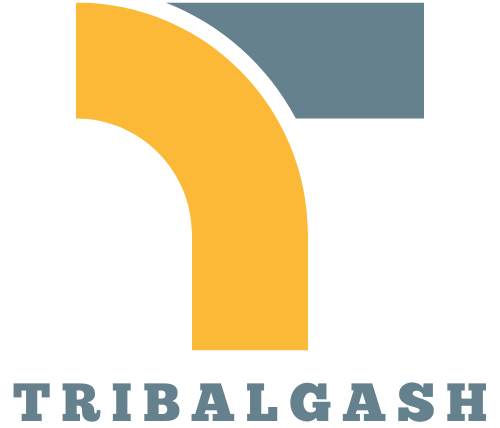In a world where calculators are practically an extension of our hands, it’s time to ask the burning question: how good is ChatGPT at math? This AI marvel claims to crunch numbers faster than a caffeinated squirrel on a power line, but can it really hold its own in the math arena?
Table of Contents
ToggleOverview of ChatGPT’s Capabilities
ChatGPT showcases impressive capabilities across various domains, including mathematics. It can perform basic arithmetic, algebraic equations, and even more complex calculations, all with a reasonable degree of accuracy. Users often find it helpful for solving equations and providing step-by-step solutions.
When tasked with numerical problems, it accesses a vast internal knowledge base, allowing it to respond quickly. Many users report satisfaction with its performance in calculating percentages, understanding syntax, and performing mental math tasks.
Limitations do exist. ChatGPT may struggle with advanced concepts, such as calculus or abstract algebra, especially when multiple steps are involved. Ambiguous or poorly defined questions can lead to inaccuracies as well, causing frustration for users seeking precise answers.
Notably, its feedback mechanism allows for understanding errors in reasoning. Users can provide clarification or additional context, helping the model refine its results. While certain mathematical scenarios may challenge the model, it can still offer alternatives, producing results that often guide users toward the correct solution.
Overall, users appreciate ChatGPT’s rapid processing abilities for everyday math tasks. As usage scenarios vary, experiences range from satisfactory to challenging depending on complexity and clarity. Advancements in AI continue to bolster its competency, making it a valuable tool in mathematical problem-solving.
Math Problem-Solving Skills

ChatGPT demonstrates significant proficiency in various mathematical tasks. Users often leverage its ability for basic math operations and advanced calculations alike.
Basic Arithmetic
Basic arithmetic problems pose no challenge for ChatGPT. Simple addition, subtraction, multiplication, and division can be solved with ease. The AI processes calculations quickly, providing straightforward answers in seconds. Many rely on it for quick computations during daily tasks. Users can receive immediate solutions to operational questions like 25 + 47 or 89 ÷ 3. It’s important to note that even with these fundamental operations, clarity in the question enhances accuracy.
Advanced Calculations
Advanced calculations present a different scenario. While ChatGPT can tackle more complex equations, it performs best with structured queries. Algebraic expressions and percentage problems are manageable, yet challenges arise with intricate concepts such as calculus or abstract algebra. Multiple-step problems may lead to inconsistencies if the question lacks clarity. Feedback from users helps refine the AI’s performance, improving its handling of such tasks. Progress in AI development continues to enhance ChatGPT’s capabilities, making it a useful resource for a range of mathematical challenges.
Limitations of ChatGPT in Math
ChatGPT exhibits notable limitations in its mathematical abilities. Users encounter challenges when dealing with advanced mathematical concepts, especially those requiring a deeper understanding.
Understanding Mathematical Concepts
Understanding mathematical concepts remains a significant hurdle for ChatGPT. It struggles to fully grasp abstract ideas or theories, such as those in higher mathematics. As a result, users may receive inaccurate solutions if the concepts are vague or complex. In cases involving calculus or theoretical algebra, misunderstandings can lead to errors in responses. Clarity of concepts is central to ensuring accurate outputs from the model. Users benefit when they present well-defined questions that align with standard mathematical principles.
Handling Complex Problems
Handling complex problems proves difficult for ChatGPT. Multi-step problems often become confusing, especially when they require sequential reasoning. When faced with intricate calculations, it may overlook critical steps or misinterpret user intent. Unclear or ambiguous queries exacerbate these issues, resulting in incorrect answers. Even when structured correctly, problems with various mathematical operations challenge the AI’s ability to provide concise solutions. Users should consider breaking down complex questions into simpler parts for better results.
Real-World Applications
ChatGPT exhibits various practical applications in real-world contexts, particularly in education and professional settings.
Educational Use Cases
Students find ChatGPT beneficial for homework help and tutoring. It assists them with understanding key mathematical concepts and provides instant feedback on problems. Many educators utilize ChatGPT to create engaging quizzes and practice problems. This AI tool also supports personalized learning by adapting explanations to meet unique student needs. Teachers can leverage its ability to generate step-by-step solutions, enhancing classroom discussions on problem-solving techniques.
Professional Use Cases
In professional environments, ChatGPT aids in data analysis and financial modeling. Analysts often use it to perform calculations and generate reports efficiently. Businesses benefit from its capabilities to calculate budgets and forecast expenses, saving valuable time. Additionally, engineers and researchers utilize it for quick mathematical calculations while working on complex projects. Its versatility in various fields makes it a reliable companion for professionals seeking to streamline their workflows.
User Feedback and Experiences
Users consistently share a mix of positive and critical experiences regarding ChatGPT’s math capabilities. Many appreciate its efficiency with basic arithmetic and algebra. For instance, simple calculations and straightforward equations often receive quick and accurate responses. Feedback highlights a particular fondness for the step-by-step solutions, which help clarify problem-solving processes.
Challenges arise when users encounter complex mathematical concepts. Reports indicate that ChatGPT sometimes struggles with calculus or higher-level algebra, especially when the questions lack specificity. Users mention frustration when the AI overlooks essential steps in multi-part problems, leading to incomplete answers. Clarification of inquiries usually enhances the output’s accuracy, reflecting the importance of clear communication with the AI.
Educational settings often showcase ChatGPT’s utility. Students experience benefits from its homework assistance, experiencing a supportive learning environment. Teachers have used it to design engaging quizzes and activities, gaining diverse content tailored to their students’ needs.
Professional users note the tool’s effectiveness in financial modeling and data analysis. ChatGPT provides rapid calculations, enabling businesses to save time. However, feedback indicates that while it performs well for routine tasks, more nuanced or complex queries require additional guidance to achieve accurate results.
Ongoing improvements to AI technology contribute to evolving user experiences. Acknowledgment of its limitations accompanies recognition of its strengths. Users emphasize patience and clarity in interactions, ultimately leading to more satisfying outcomes in mathematical problem-solving.
ChatGPT showcases impressive capabilities in handling basic to intermediate math problems. Its speed and efficiency make it a useful tool for students and professionals alike. While it excels in straightforward tasks like arithmetic and algebra, challenges arise with more complex concepts. Users must communicate clearly to enhance the AI’s accuracy, especially with intricate multi-step problems.
Despite its limitations in advanced mathematics, ChatGPT remains a valuable resource for quick calculations and educational support. As AI technology continues to evolve, its mathematical proficiency is likely to improve, offering even greater assistance in various applications. Users can benefit significantly by understanding its strengths and weaknesses, ensuring a more productive interaction.









